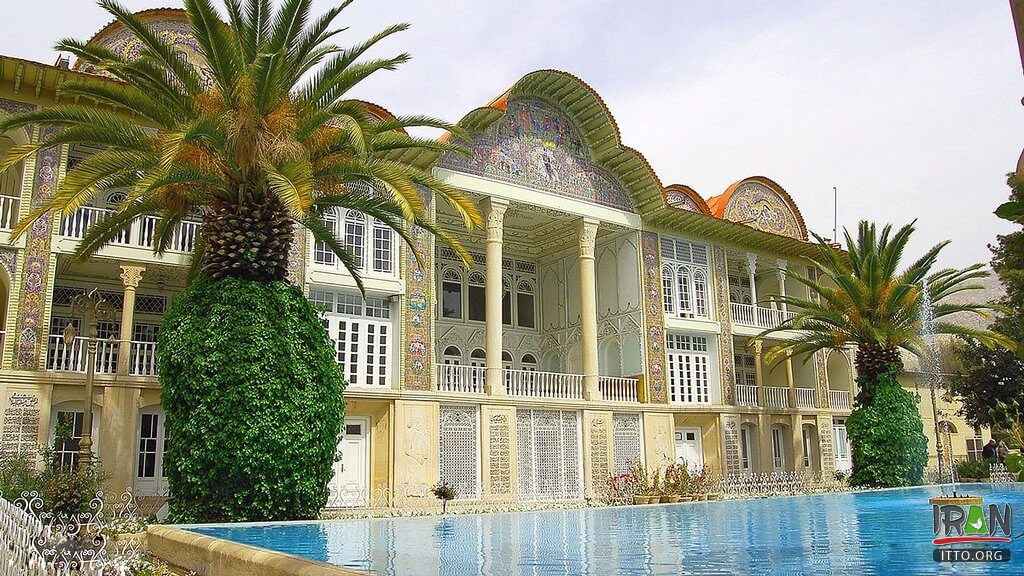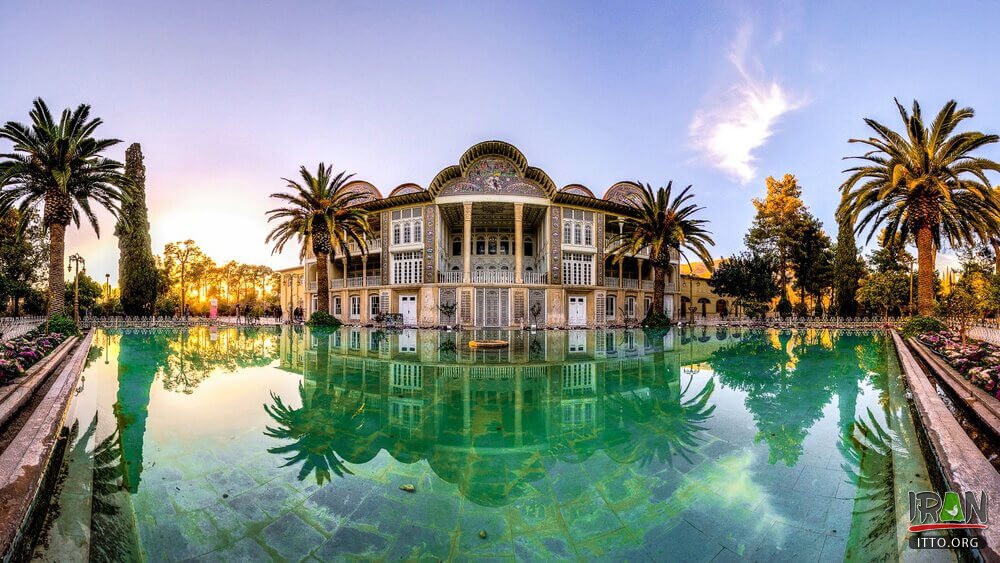The historic Eram Garden is one of the best attractions of Shiraz with an old pavilion inside and one of the best examples of Persian Gardens in Shiraz near the Khoshk (dry) River. The world famous poet of Shiraz, Hafiz points to this garden in some of his poems. The garden was given to Shiraz University in 1963 by the government. And then it was transformed into a botanical garden with various species from all over the world.The beautiful Eram garden was registered as UNESCO World Heritage Site in 2011 as the symbol of Persian gardens and fond a worldwide fame.
At present it attracts visitors from all walks of life not only for its historical identity but also for its beauty and as a botanical research center. The pond and its fountains give this beautiful garden the nicest views especially during the night when the play with lights is functioning. These features along with the present elements of Persian Gardens in Iran has converted this garden to one of the best and top places worth a visit in Iran.

Eram Garden, Bagh-é Eram (Garden of Paradise) is a famous historic Persian garden in Shiraz, Iran.
Thus this attractive attraction attracts many Persian and foreigner visitors to enjoy its scenic views and its nice atmosphere.The garden bears a favorable environment for over 45 plant species and many cultivars to be grown identified and labeled accordingly. It has a vast area allocated to fruit trees including pomegranates, sour oranges, persimmons, olives and walnuts. In the rock garden part, a wide range of beautiful sub-tropical plants are on display. The beautiful 200-year-old towering cypress trees are globally known as (Sarv-e- naz) attract visitors from around the world to the garden. And over 300 rose species create a panoramic view in April.Its building is regarded as a masterpiece of Qajar era with respect to its architecture, painting, tiling, chiseling, lithography and tori. The edifice is a three-storey building with a metal roof.
There is a portico in front of the building which has a flat roof supported by two columns. Seven colored tiles are used throughout the building with scenes representing the Iranian national and religious stories. The columns of the building are covered by monolithic Gandomak slabs of more than two meters high on which poems by famous Iranian literary figures Hafiz, Saadi, and Shourideh Shirazi are carved.The panoramic views of the garden, the aroma of flowers, the splendid view of old cypress trees and the grandeur of ancient building enchants visitors from all over the world and these are some of the reasons this unique garden has become one of the most visited attractions of Shiraz and is included in the itineraries of almost all travel packages of Iran tours. Enjoy your visit to one of the most splendid and nicest Persian gardens on Earth.

During the late Zand Dynasty, the garden was owned by Qashqai tribal chiefs. A Qashqai tribal chief, Mohammad Qoli Khan ordered the construction of the original mansion in the early eighteenth century, planting the garden with different trees including cypress, pine, orange and persimmon trees.
Both the building and the garden were built during the middle of thirteenth century by the Ilkhanate or a paramount chief of the Qashqai tribes of Pars. The original layout of the garden however, with its quadripartite Persian Paradise garden structure was most likely laid in eleventh century by the Seljuqs, and was then referred to as Baagh-e Shaah ("The emperor's garden" in Persian) and was much less complicated or ornamental.
Over its 150 years the structure has been modified, restored or stylistically changed by various participants. It was one of the properties of noble Shiraz Qavami Family.The building faces south along the long axis. It was designed by a local architect, Haji Mohammad Hasan. The structure housed 32 rooms on two stories, decorated by tiles with poems from the poet Hafez written on them. The structure underwent renovation during the Zand and Qajar dynasties.

The garden with its beautiful flowers, refreshing air, tall cypresses (a stately, beautiful cypress tree there known as sarv-e naz which is said to go back to 3000 years ago) and fragrant myrtles is a major tourist destination especially in the spring.
In 1965, Sir Denis Wright, a British ambassador in Iran, was invited by the Chancellor of Shiraz University, Asadollah Alam, to a party in Eram Garden for Princess Alexandra of the Oglivy. The compound came under the protection of Pahlavi University during the Pahlavi era, and was used as the College of Law. The building also housed the Asia Institute.
Today, Eram Garden and building are within Shiraz Botanical Garden (established 1983) of Shiraz University. They are open to the public as a historic landscape garden. They are World Heritage Site, and protected by Iran's Cultural Heritage Organization.

